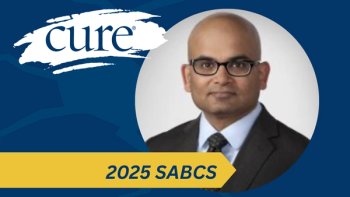
To Prosthesis or Not to Prosthesis
Prosthesis is another word added to my cancer vocabulary.
After meeting with my surgeon the week before my mastectomy, the nurse returned to the room with a list of cancer websites to visit (as if I hadn’t just about clicked my brains out over the previous few days), a small pillow made by hospital volunteers to help cushion my seatbelt (cushion my seatbelt? Why does my seatbelt need cushioning? Are we talking about pain here?), things to do before and after surgery and a list of vendors for a medical camisole that I would need to wear after surgery. It had been an overwhelming week, an overwhelming day and an overwhelming hour.
As I glanced at the vendor list, fully expecting to see names of medical supply stores I didn’t know existed and didn’t want to visit, thinking I would have to search for medical camisoles on a shelf somewhere in the store and then be rung up by a clerk who had no idea of what I was going through, I felt my anxiety level rising. Slowly my eyes focused on the list and the name of a department store leaped out, clearly yelling “Pick me!” I hesitated. The store is known for its customer service along with prices that are far higher than the more practical places I frequent. I quickly weighed my concerns. If there was any time in my life that I needed a little bit of TLC this was it, even if it blew the budget. I opted for the department store. The prescription was written and faxed over. The nurse went over the rest of the material with me and I left with my head spinning. I drove back to work and my phone rang. A fitter from the lingerie department was calling to make an appointment for me to go medical camisole shopping! I usually bought underthings from the sale rack at a discount store. I was in completely uncharted territory, but that journey had actually started with my diagnosis days before.
On Saturday, I presented myself at the store at the designated time. Unsure of sizing, I tried on two camisoles. The fitter explained the drainage pockets and the fiberfill form that came with the camisole. Since I was already in the twilight zone, I asked about mastectomy bras. She showed me some they had in stock, but explained the store’s policy was to make any bra I selected into a mastectomy bra by sewing in a prosthesis pocket at no cost. Pros-what? I made my camisole purchase and left to have a boob chopped off.
Now, to say I am overweight is a lie. A very kind lie, but a lie nevertheless. At the time of diagnosis, I was morbidly obese. I still am, but I am working on it and have lost almost 100 pounds in the last few years. Since my early teens, I have been extremely, well, let’s just say curvaceous. I knew that after surgery, there was going to be nothing there on one side. That’s what my brain told me. Still, I was not prepared to find there really was nothing there.
When I returned to work three weeks later, I was still sore and healing. I continued to wear a medical camisole with the flat side stuffed with the fiberfill that came with it. It looked fine, but it really wasn’t. A fake fiberfill boob weighs next to nothing. A real one can be a few pounds, depending on its size, and mine is large. And then there’s this thing called gravity. As I moved around the fake boob had a tendency to rise up towards my collar bone since it had nothing to weigh it down. The real boob had a tendency to ride lower in the other side of the camisole due to the effect of the aforementioned gravity. I was constantly tugging at the camisole to get them level. I felt very self-conscious and it was not fun. I know, there are women who don’t hide the reality of a mastectomy, but I am not one of them. Even as I continue to lose weight and inches, the difference between one side and the other is blatant, and I prefer not to draw attention to it.
I returned to the department store two months later to buy mastectomy bras. My doctor wrote a prescription for the three bras Medicare allows every year and a prescription for a breast prosthesis.
I had done my clicking and reading on prostheses. I was going to stick with the light fiberfill since I already had it and it seemed to be doing the intended job. Of course the fiberfill meant I would continue tugging at my bra and performing a constant balancing act. Oh, and it truly was a balancing act. The body is symmetrical. Although a breast weighs only a few pounds, the lack of one had thrown off my balance. I was completely off-kilter when I stood or walked. When discussing this with my doctor and nurses in the oncology department, I was told the balance issue was common after a mastectomy, even in women far less endowed than I.
I tried on some bras and decided what to purchase.
The fitter wanted me to try a prosthesis, but I demurred. I thought a prosthesis was vain, impractical, expensive, unnecessary and utterly ridiculous. As far as I was concerned, there was nothing that could replace what was no longer there. When doing the paperwork for the bras, the thought crossed my mind that I was making a decision without enough information. I asked to try a prosthesis. The fitter brought several selections into the dressing room and discussed the features of each prosthesis. Who knew? Even though I had seen prices online, I was still stunned by the price tags. It was nice to know that Medicare covered 80 percent of the cost, but I wasn’t planning on buying a prosthesis. I tried one on. Even sitting down, I could see the difference. Maybe it was my imagination, but the silicone looked better than the fiberfill. It had heft, and I knew it couldn’t head for my collarbone even if it wanted to. For the first time in two months, I looked like me, or at least like the me I used to look like. I stood up, prepared to fight the balance war, but I was balanced. I took a few steps, and then a few more. I didn’t totter at all. My balance problem was solved by a couple of pounds of silicone! I knew I had to have it!
Over the last few years, as I have slowly lost both pounds and inches, my first prosthesis was replaced with a smaller one. That one will soon be replaced with another smaller one. I wear my prosthesis every day to help me with my balance. I don’t think I would have gotten it if it was only for the cosmetic effects, but I recognize and appreciate the cosmetic side. I realize a prosthesis is not for every woman. If I were thin or had a double mastectomy, there wouldn’t be the need to correct my balance. That not being the case, I am glad I tried it out rather than simply dismiss the choice out of hand. That little bit of silicone makes a big difference for me.
To prosthesis or not to prosthesis is the question. Each woman who asks it has to make up her own mind when answering. She should do what is right for her at that time, not what others want or expect her to do. I would just say that you cannot make an informed decision without information, and with something like a prosthesis maybe you should take one out for a test drive before deciding. That’s what I did and I am glad I did it.




